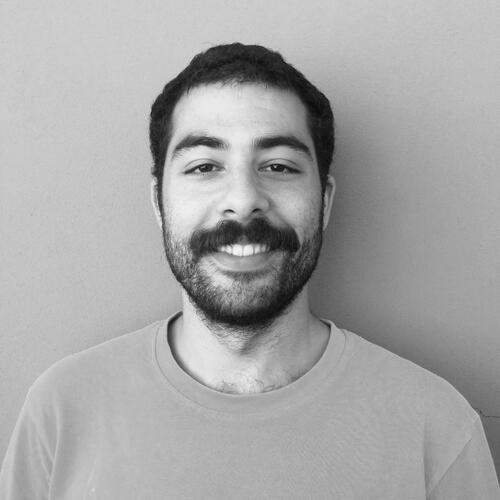
George Papamatthaiakis is a graduate student in the Master of Environmental Design program at the Yale School of Architecture. He is a human geographer and architect who has previously worked with Big Olive tour company in Athens and Strelka Institute in Moscow.
What do you think is the role of architecture in human life, beyond buildings?
There’s a way to think of architecture as the study of the built environment and its interactions with life, rather than as solely the making of designed artifacts. My first degree was in architecture, but I then continued with a master’s in human geography, and this is mostly where I feel I come from.
What is your research about?
I study the making and remaking of coastal natures in the Eastern Mediterranean—specifically Greece—under the pressures of tourism and within the context of contemporary environmental anxieties. I am interested in the intersections of the tourism industry with environmental management. A part of my work, for example, looks at tourism certification schemes along the Greek coastline, while another concerns the involvement of large hospitality corporations in conservation projects. In both cases, tourism-driven environmental management constructs a certain imaginary around our natural surroundings, framing them as spaces for human leisure. I am studying how such priorities influence environmental management, and how they end up shaping coastal territories.
What have been some challenges in your own research?
Tourism is a dynamic global phenomenon that touches ground differently in different parts of the world. I am seeing that, in certain places, the more corporatized and financialized the hospitality industry becomes, the more it influences and engages with large scale environmental management and design, treating nature as its “critical infrastructure.” This appears to be true for many parts of the global sunbelt and is especially relevant for regions in the developing world. Therefore, I am trying to explore how my research could reverberate beyond the specific geographical locations I study in the Eastern Mediterranean. But it’s not easy to make the cases commensurable: it has been challenging to make connections between my findings and the realities of other sites around the world.
How has the Environmental Humanities program guided your research?
Two things here. First, in a counterintuitive way, the Environmental Humanities readings and discussions have helped me de-center the human element in thinking about space and time. For example, one rehearses the habit of working across time scales, including, say, geological ones. Decentering the human from the center of one’s inquiry illuminates different aspects of a research topic. In my case, for instance, studying the beach means also to investigate the historical transition through which the coastline became associated with this very specific spatial program. Thinking through the inhuman has been very helpful in imagining the world otherwise; in realizing that spaces such as the beach have more than one way of being programmed and laid out. Second, each meeting of the Environmental Humanities workshop is a very interesting discussion with colleagues from other departments and disciplines. In these engagements not only do I learn a lot for my own topic as I approach it anew through my colleague’s perspectives, but also I learn how to participate in a discourse across disciplines and vocabularies. Both these things enrich my work, research, and reasoning.
What was your work with the Big Olive tour company like?
The last decade has been a tough one for Athens, at least because of the continuing economic recession and austerity since 2008, as well as what some call the “refugee crisis” that peaked around 2015. For these and other reasons Athens drew the interest of various academic institutions from the west, which traveled and held conferences, workshops, and educational trips in the city. Big Olive partnered with academic and art institutions, curating study trips and experiences across the city. In this context, I worked as a research associate for the production of these experiences, focusing mostly on the urban geography of the city and its civic infrastructures.